
Imagine you’re deeply immersed in a video game, where every character feels alive, and every plot twist seems tailored just for you. This isn’t the future; it’s what CustomGPT.ai is making possible today.
Video games have long been a medium for storytelling, but integrating Custom GPTs elevates this to a new level. These advanced tools allow developers to create dynamic, responsive storylines where player choices have real impact.
This blog post explores how CustomGPT.ai, with its no-code platform and unique features like anti-hallucination and citation capabilities, is revolutionizing narrative design in gaming.
Join us as we delve into the world of creating engaging video game storylines using the power of Custom GPTs.
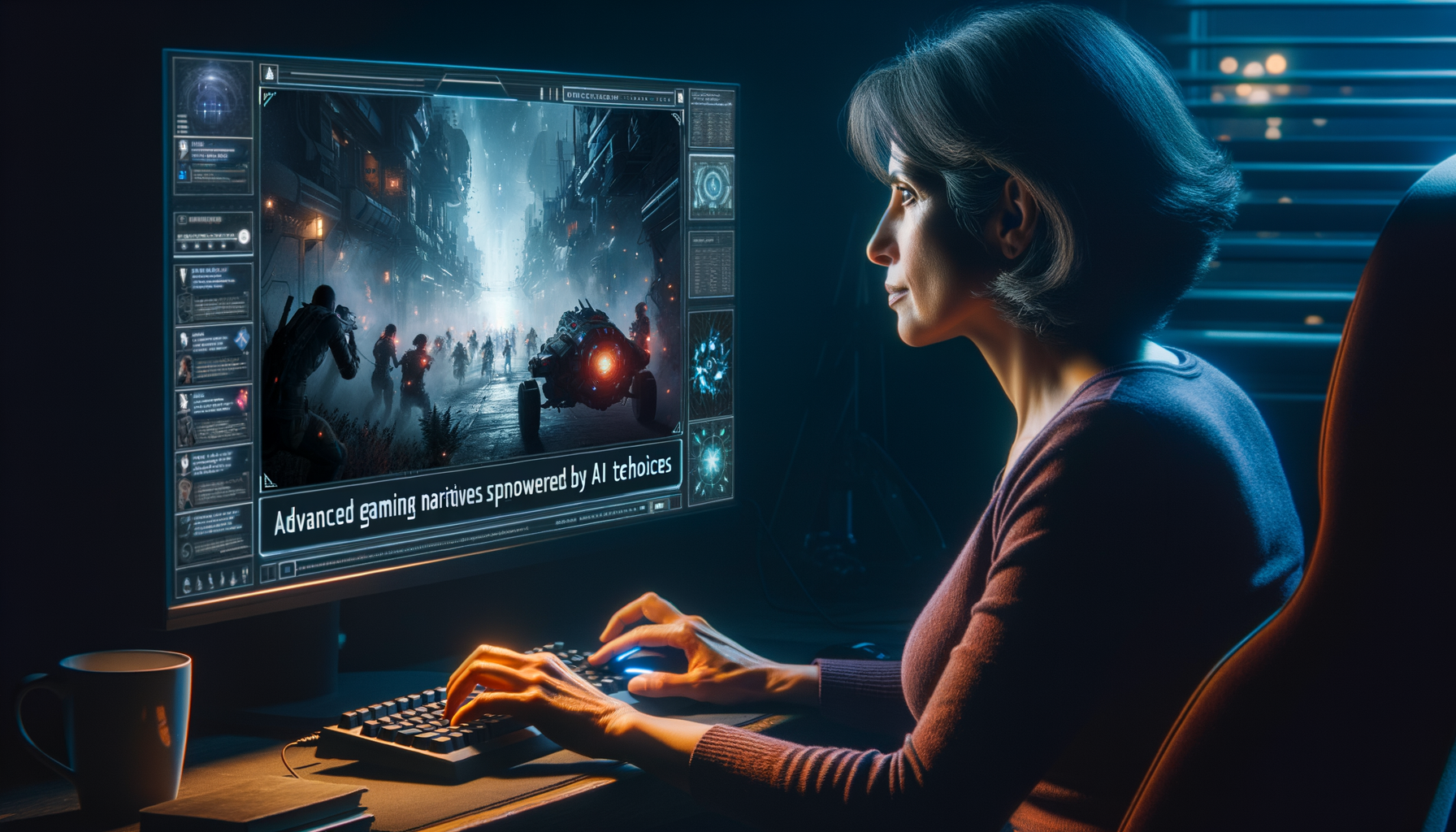
The Importance of Storytelling in Video Games
Storytelling isn’t just about keeping players entertained; it’s the heart of a memorable video game experience. Think about it: when you recall your favorite games, isn’t it the story that often stands out?
Whether it’s the epic journey of a hero or the intricate world full of lore, stories give context to our actions within the game, making every challenge more meaningful and every victory sweeter.
By weaving narratives that resonate with players, games go beyond mere play to become immersive experiences that stick with us long after we’ve put down the controller. This is where CustomGPT.ai can truly shine, transforming standard game narratives into dynamic, interactive adventures that adapt to each player’s choices.
Overview of Custom GPTs in Narrative Design
Custom GPTs are revolutionizing how we craft narratives in video games. These tools, especially platforms like CustomGPT.ai, allow creators to build complex, adaptive storylines without needing to code.
Imagine a game where the story evolves based on your decisions, not through pre-scripted scenarios, but through AI-driven dialogue and events that feel incredibly natural and responsive.
This capability not only enhances player engagement but also opens up endless creative possibilities for developers.
With CustomGPT.ai, the narrative design becomes more intuitive, allowing storytellers to focus more on the creative aspects of game development.
Understanding Custom GPTs
Did you know that the average gamer spends about 8.5 hours a week playing video games? This staggering number isn’t just about leisure; it’s a testament to the immersive worlds and compelling narratives that games offer.
Enter Custom GPTs, a game-changer in narrative design. These tools, particularly from platforms like CustomGPT.ai, empower developers to craft stories that adapt and evolve based on player choices, without needing to write lines of code.
This section delves into how Custom GPTs are not just enhancing the storytelling process but revolutionizing it, making game narratives more dynamic and engaging than ever before.

What are Custom GPTs?
Ever wondered what makes Custom GPTs stand out? Essentially, they are like your standard AI models but supercharged with customization. This means they can be tailored to understand and interact in ways that are uniquely aligned with specific tasks or industries.
For instance, in the realm of video games, Custom GPTs can be programmed to handle complex narrative decisions, adapting the storyline dynamically based on player choices.
This level of customization allows developers to craft more engaging and personalized gaming experiences, making each player’s journey through the game feel truly unique.
How Custom GPTs Enhance Narrative Elements
Custom GPTs are not just tools; they’re game-changers in narrative design. By integrating platforms like CustomGPT.ai, developers can infuse their stories with unprecedented depth and flexibility.
Imagine a scenario where every player choice spirals into unique story branches, all managed seamlessly by the AI. This capability ensures that narratives are not only engaging but also deeply personalized, making each gaming experience uniquely captivating.
Custom GPTs handle complex narrative logistics, allowing creators to focus on crafting compelling content that resonates with players on a personal level.
Crafting a Storyline with GPTs
Did you know that the most memorable video games often owe their success to compelling storylines? It’s not just about graphics and gameplay; the story is what truly engages players and keeps them coming back.
This is where Custom GPTs come into play, revolutionizing the way narratives are crafted in the gaming industry.
By leveraging the power of CustomGPT.ai, developers can create dynamic, evolving storylines that adapt to each player’s decisions, providing a deeply personalized gaming experience.
Let’s dive into how you can harness these tools to craft stories that resonate and captivate your audience.
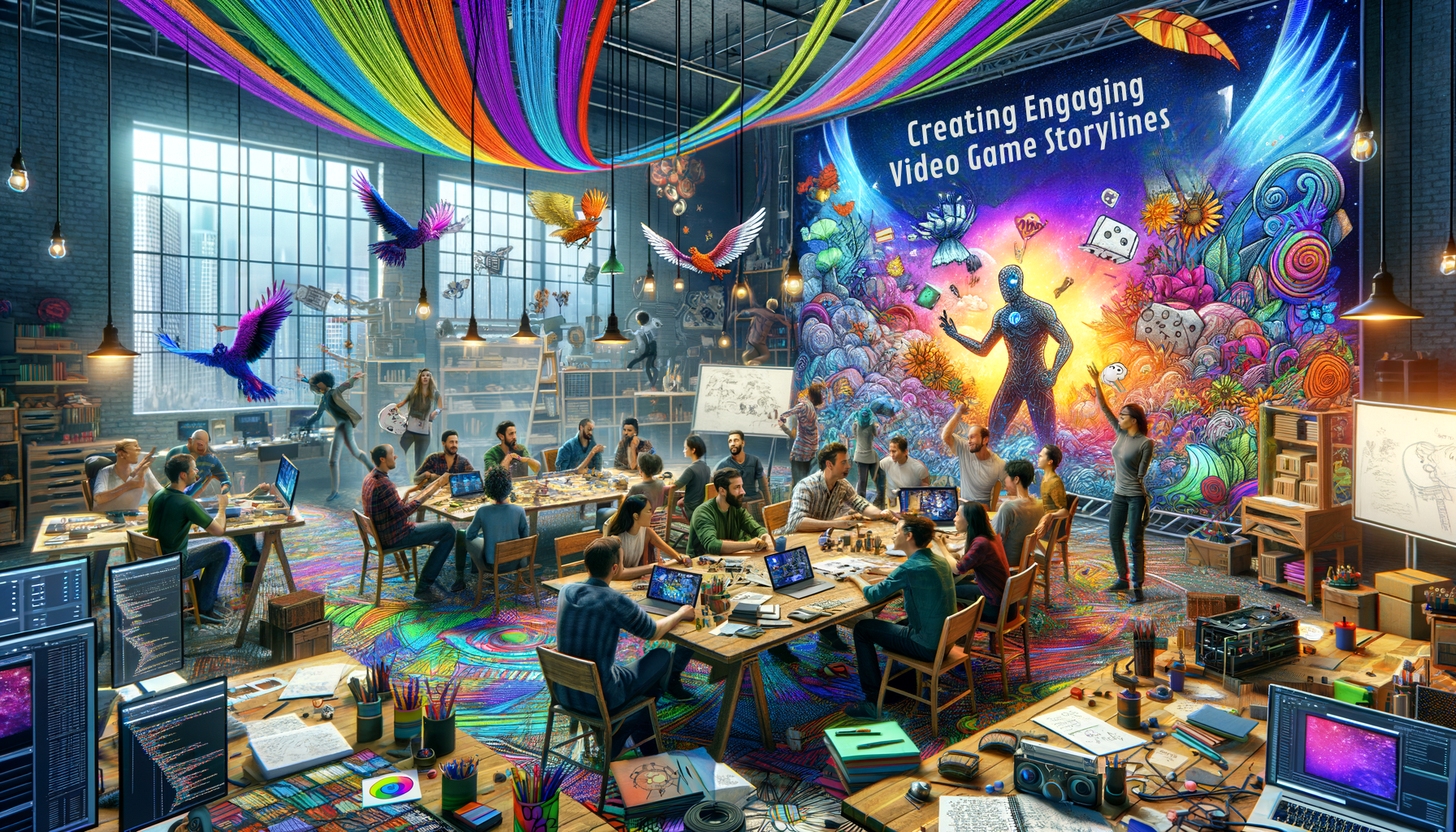
Setting the Scene: Characters and Settings
When diving into the world of video game creation, the magic starts with setting the scene. Think of it as the canvas where your story will unfold.
Using CustomGPT.ai, developers can effortlessly craft intricate settings and multi-dimensional characters that resonate with players. This tool simplifies the process, allowing you to focus on creativity rather than code.
Imagine designing a bustling cityscape or a tranquil village, each element tailored to enhance the narrative. Characters come to life with unique backstories and motivations, all shaped by the player’s interactions. This dynamic environment not only captivates but also deeply immerses players in the world you’ve created.
Plot Development: Using GPTs to Create Dynamic Story Arcs
In the world of video game development, the storyline is the backbone that captivates players. Custom GPTs, like CustomGPT.ai, revolutionize how we approach plot development.
These tools enable creators to weave complex, dynamic story arcs that respond to player choices, ensuring a unique experience for everyone. Imagine a narrative that evolves, branching out based on decisions made in-game.
This not only enhances player engagement but also breathes life into the virtual world, making every playthrough distinctively enthralling. With CustomGPT.ai, the possibilities for creative storytelling are virtually limitless.
Integrating GPTs into Game Development
Ever wondered how the most immersive video games manage to keep their narratives fresh and engaging? The secret often lies in the integration of advanced technologies like CustomGPT.ai. This tool is not just about automating responses; it’s about creating a rich, adaptive storytelling environment that reacts to each player’s actions.
By incorporating CustomGPT.ai into game development, creators can craft complex, evolving narratives that make every gameplay unique. This approach not only enhances player engagement but also sets a new standard in personalized gaming experiences.
Let’s explore how this integration can transform the way stories are told in the gaming world.
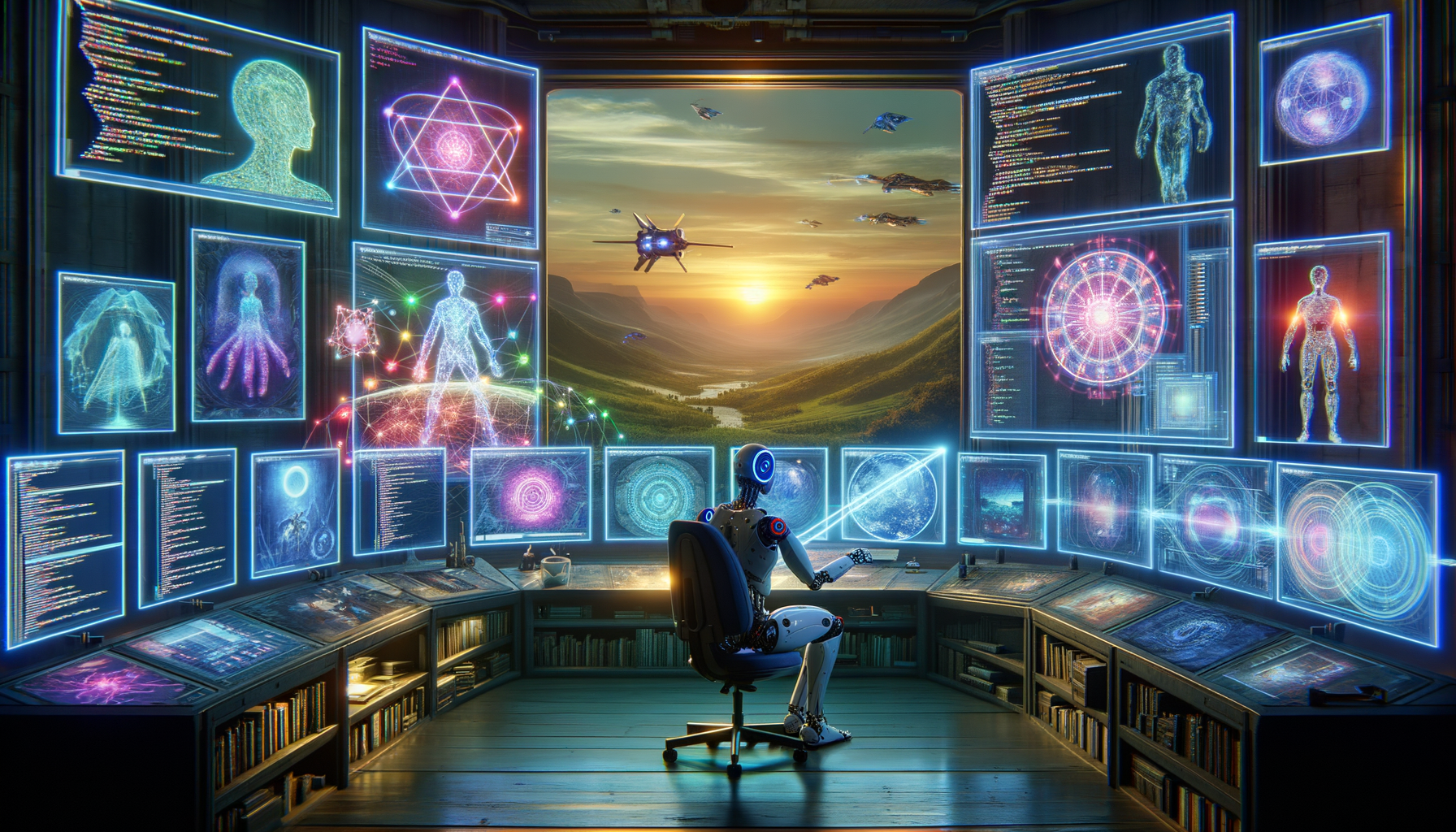
Technical Integration of GPTs
Integrating CustomGPT.ai into your game development isn’t just about adding a new tool; it’s about transforming how your game interacts with players. This process involves embedding the GPT into your game’s engine, where it can process player inputs and dynamically generate responses or narrative changes.
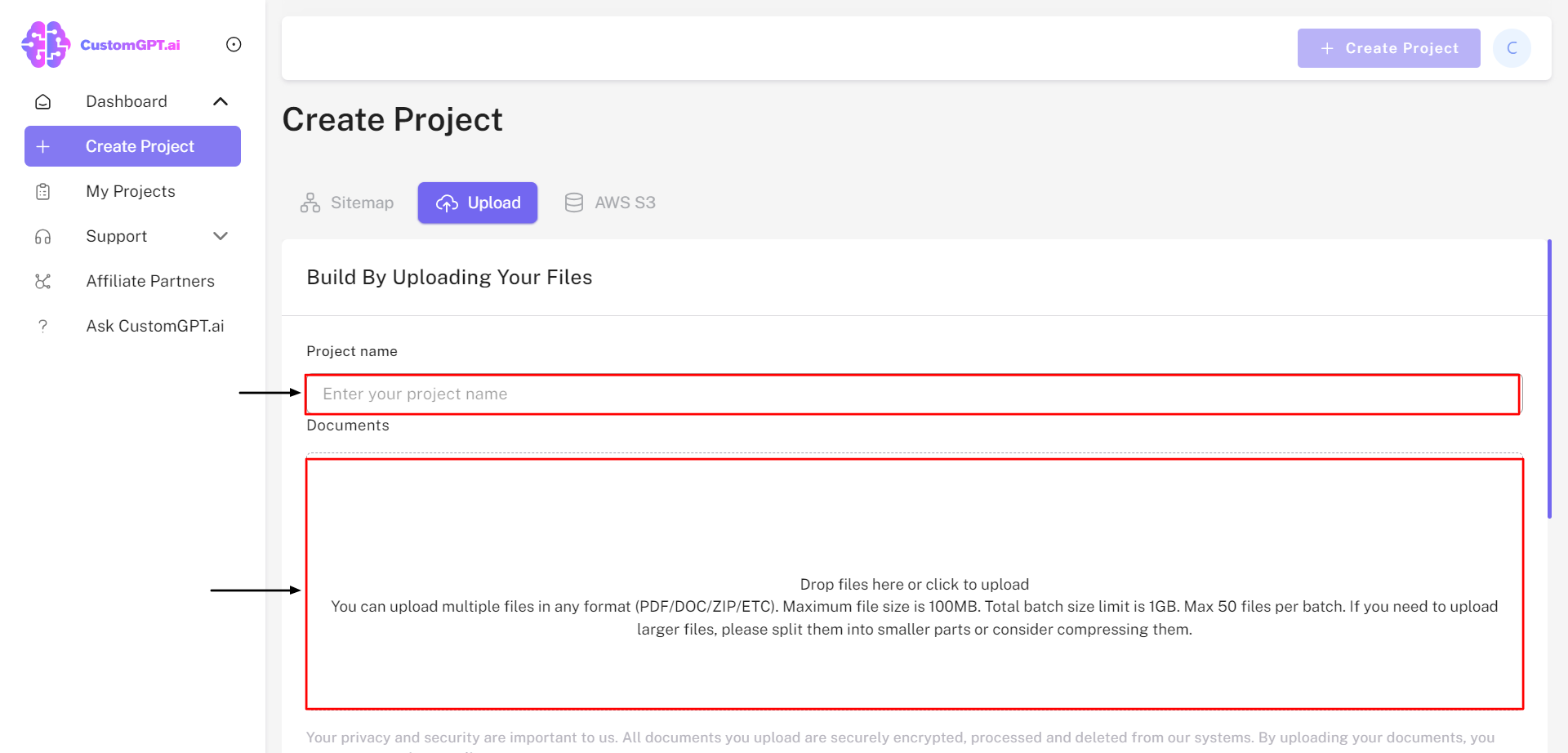
The beauty of CustomGPT.ai lies in its no-code platform, which simplifies what could otherwise be a complex coding endeavor.
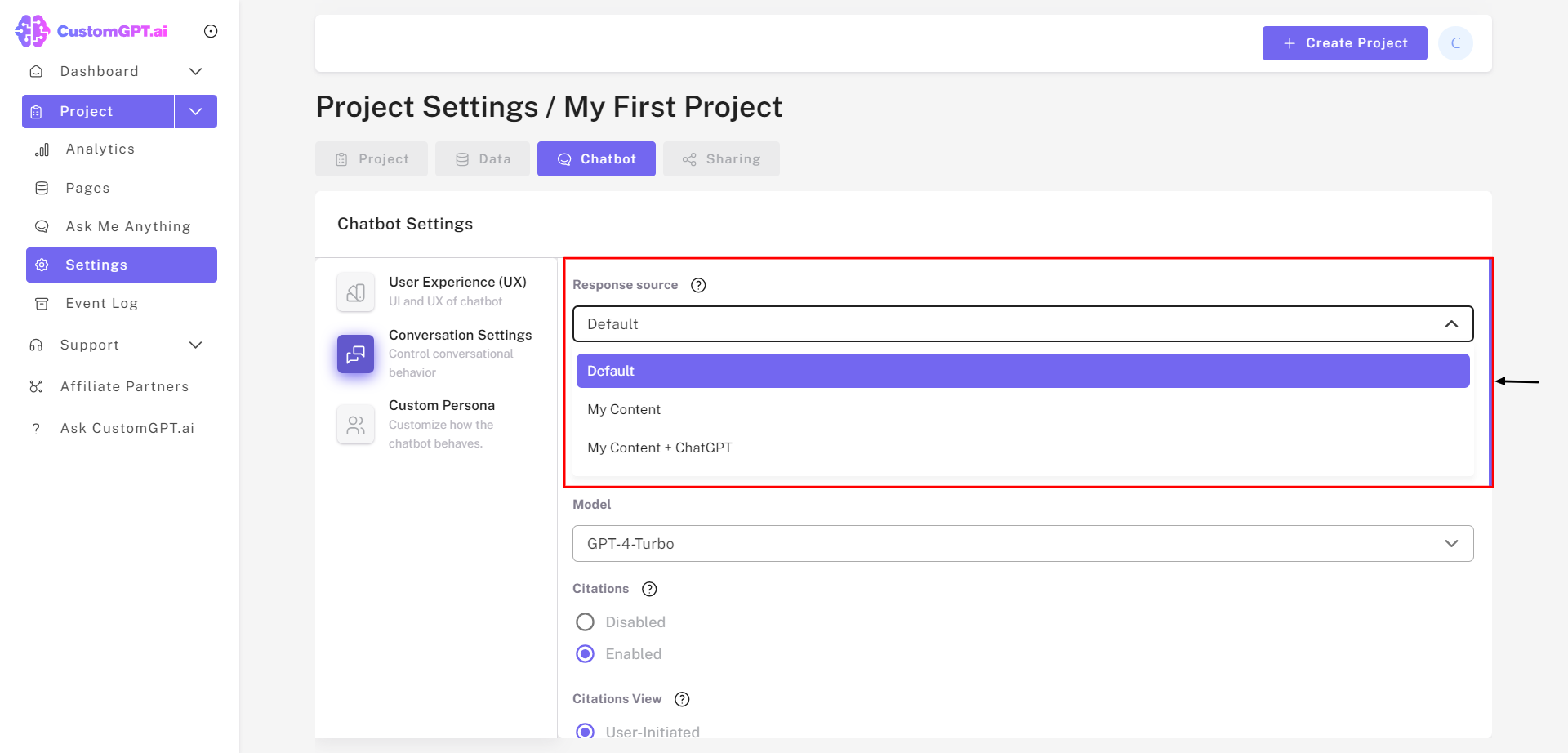
This means even teams without deep programming expertise can implement AI features that adapt and evolve with each player’s journey, making the Game experience incredibly personal and engaging.
Balancing Creativity and AI Contributions
Integrating AI like CustomGPT.ai into game development is a dance between human creativity and machine intelligence. It’s about leveraging the AI to handle large-scale narrative possibilities while keeping the core storyline deeply human and relatable. This balance ensures that each player’s experience is unique, yet consistently engaging.
By using CustomGPT.ai, developers can automate complex story branching without losing the personal touch that makes stories resonate. This not only enhances the narrative depth but also allows creative teams to focus on crafting more intricate and emotionally compelling game worlds.
Case Studies
Did you know that some of the most captivating video game storylines are now being crafted with the help of AI? That’s right, CustomGPT.ai is not just a tool; it’s a game-changer in the truest sense.
In this section, we’ll dive into real-world case studies where CustomGPT.ai has been instrumental in developing engaging narratives.
These stories aren’t just about technology but about how it enhances creativity, allowing developers to push boundaries and create immersive experiences that resonate with players around the globe.
Let’s explore how CustomGPT.ai is setting new standards in the gaming industry.

Successful Video Games Using GPTs
Have you ever played a game that seemed to read your mind? That’s the magic of integrating GPTs like CustomGPT.ai into video game development. These tools enable games to offer dynamic storylines and personalized experiences that adapt to player choices, making each gameplay session unique.
For instance, a fantasy RPG implemented CustomGPT.ai to generate real-time dialogue based on player decisions, enhancing the immersive experience. This not only kept players engaged longer but also significantly increased positive reviews, showcasing the power of adaptive AI in gaming.
Lessons Learned from Implementing GPTs in Games
When we dive into the integration of GPTs like CustomGPT.ai into video games, the lessons are as transformative as they are enlightening. First, the adaptability of AI to generate responsive, player-specific content is a game-changer, literally.
It allows narratives to evolve based on player choices, creating a deeply personalized experience.
However, the challenge lies in maintaining a balance; the AI must enhance the story without overshadowing the player’s freedom to explore and impact the game world. This delicate balance is crucial for keeping the game engaging and immersive.
Through these implementations, we’ve learned that the key is not just using AI, but integrating it in a way that feels natural and enhances the overall player experience.
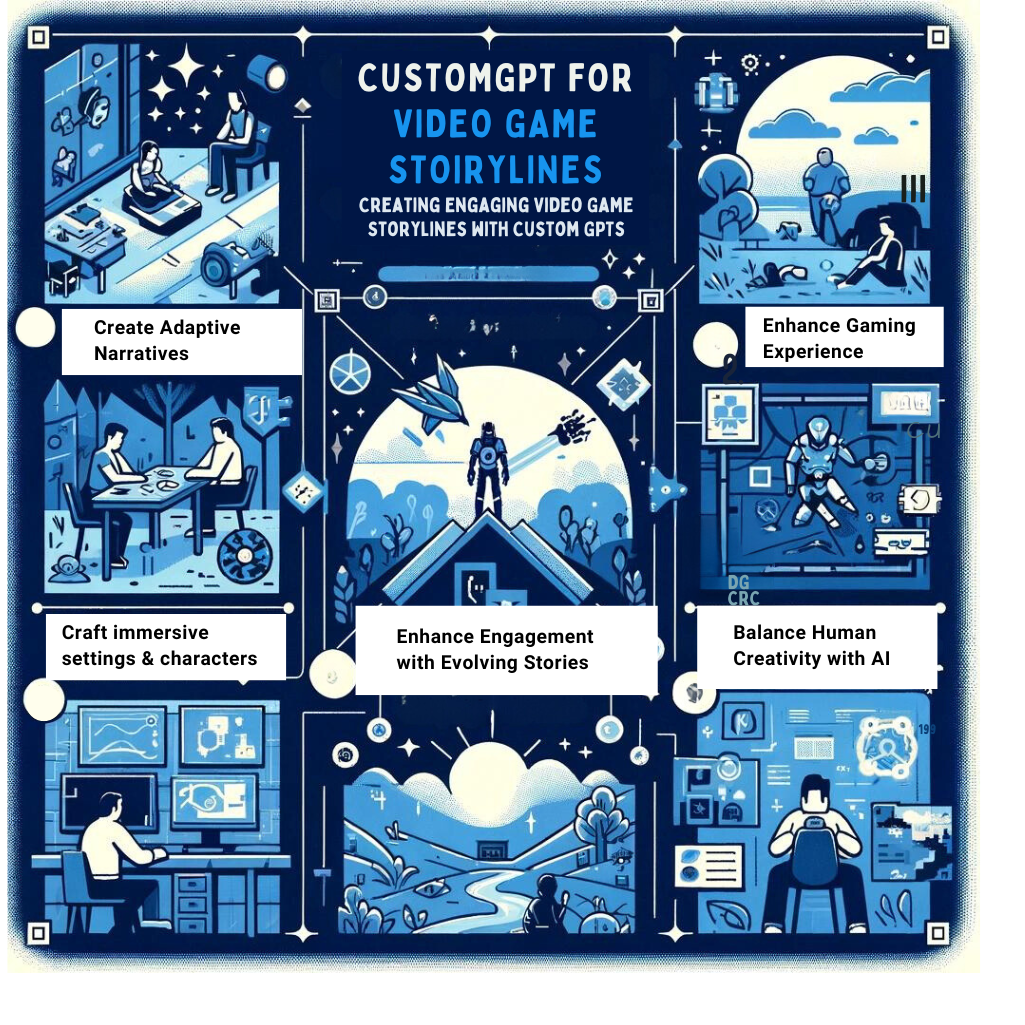
FAQ
1. What are Custom GPTs and how do they enhance video game storytelling?
Custom GPTs are specialized versions of generative AI models tailored to specific tasks or industries. In the context of video game development, these AI tools are designed to understand and generate narrative content that aligns with the unique requirements of a game’s storyline and character dynamics.
Here’s how Custom GPTs enhance video game storytelling:
- Dynamic Content Generation: Custom GPTs can create rich, dynamic dialogues and plot developments in real-time, responding to player choices. This capability allows for a more immersive and interactive gaming experience where every decision can lead to a unique narrative branch.
- Consistency in Storytelling: These tools maintain narrative consistency, even as stories branch and evolve based on player interactions. By understanding the overarching themes and character arcs, Custom GPTs ensure that the game’s story remains coherent no matter how players choose to engage with the game world.
- Enhanced Creativity: By automating routine aspects of content generation, Custom GPTs free up human writers to focus on more creative aspects of game design. This collaboration between human creativity and AI efficiency can lead to more innovative and engaging storytelling in games.
Overall, Custom GPTs serve as powerful tools that can transform the way stories are told in video games, making them more interactive, consistent, and creatively rich.
2. Can Custom GPTs automatically generate entire storylines for video games?
Custom GPTs are incredibly powerful tools for enhancing video game narratives, but they do not typically generate entire storylines autonomously. Here’s a breakdown of their capabilities:
- Support and Enhancement: Custom GPTs excel in augmenting the creative process by generating dialogue, character interactions, and smaller narrative elements based on overarching story guidelines set by human writers.
- Collaborative Tool: They serve best as collaborative tools that work alongside game developers and writers, ensuring that the narrative remains engaging and coherent while providing creative suggestions and variations.
- Dynamic Interaction: While Custom GPTs can adapt and modify content based on player decisions, the initial storyline framework and major plot points are generally crafted by human creators to ensure a structured and impactful narrative arc.
Thus, while Custom GPTs significantly enhance the storytelling process by adding depth and interactivity, they do not replace the essential human touch needed to conceive and structure comprehensive video game storylines.
3. What are the best practices for integrating Custom GPTs into existing game development workflows?
Integrating Custom GPTs into existing game development workflows can significantly enhance the storytelling and interactive elements of a game. Here are some best practices to consider:
- Start with a Sandbox Environment: Before integrating Custom GPTs into your live game development environment, use a sandbox for testing. This allows you to experiment with the AI’s capabilities without affecting the existing game components.
- Customization is Key: Tailor the Custom GPT to fit the specific narrative and style of your game. This involves training the model on relevant data that reflects the game’s setting, characters, and plot to ensure that the AI-generated content is consistent with the game’s world.
- Maintain a Feedback Loop: Once the Custom GPT is integrated, continuously collect and analyze player feedback. Use this data to refine the AI’s performance, ensuring that it meets player expectations and enhances the gaming experience.
By following these practices, developers can effectively incorporate Custom GPTs into their game development workflows, leading to more dynamic and engaging player experiences.
4. How do Custom GPTs handle different player choices and narrative branching?
Custom GPTs are adept at handling different player choices and narrative branching, which are crucial for creating engaging and dynamic video game storylines. Here’s how they manage this:
- Adaptive Responses: Custom GPTs can generate responses on the fly, adapting to the choices a player makes. This allows for a fluid and evolving narrative that feels personal and impactful to the player.
- Branching Logic: These AI models can be programmed with branching logic that takes into account various decision paths a player might choose. This ensures that the game’s narrative branches in a way that is coherent and meaningful, depending on the player’s actions.
- Consistency Maintenance: Despite the branching narratives, Custom GPTs maintain consistency in the storyline and character development. They ensure that the narrative threads align with the overall plot and game world, no matter which paths players choose.
By leveraging these capabilities, Custom GPTs provide a rich, interactive storytelling experience that adapts to and reflects the player’s decisions, enhancing the immersion and replayability of the game.
5. Are there any limitations or challenges when using Custom GPTs for creating video game storylines?
Yes, there are several limitations and challenges when using Custom GPTs for creating video game storylines:
- Complexity in Handling Deep Context: While Custom GPTs are excellent at generating content based on immediate input, they may struggle with maintaining deep, long-term narrative arcs. This can lead to inconsistencies in storylines that span extensive gameplay.
- Creativity Boundaries: Although Custom GPTs can generate creative content, they are bound by the data they have been trained on. This might limit the novelty in storylines, potentially leading to predictable or derivative narratives if not carefully managed.
- Integration Effort: Integrating Custom GPTs into existing game development workflows can be technically challenging. Ensuring that the AI-generated content aligns seamlessly with interactive elements and game mechanics requires significant testing and refinement.
Addressing these challenges involves a combination of careful planning, ongoing training of the AI models with diverse data, and iterative testing to refine the integration of generated content into the game’s narrative structure.
Conclusion
Did you know that the average gamer spends about 8.5 hours a week playing video games? That’s a lot of time immersed in digital worlds, where the storyline can make or break the experience.
As we wrap up our exploration of using Custom GPTs to craft engaging video game storylines, it’s clear that the integration of AI can transform narrative development.
Custom GPTs not only streamline the creative process but also introduce a level of depth and personalization that traditional methods struggle to achieve. This shift not only saves time but also enhances the player’s engagement, making every gaming session uniquely captivating.
Let’s take a moment to summarize the key points we’ve covered and consider the future possibilities that Custom GPTs hold for game development.

Future of AI in Video Game Storytelling
The horizon of video game storytelling is rapidly expanding, thanks to AI. Imagine a world where every decision you make not only alters the storyline but also evolves the game environment in real-time. This is not just a possibility; it’s the future we’re stepping into with AI-driven narratives.
Custom GPTs, like those from CustomGPT.ai, are at the forefront of this revolution. They allow for deeper personalization and more dynamic interactions within games.
As these technologies advance, we can anticipate even more immersive and complex storylines that cater uniquely to each player’s choices.
This isn’t just about changing the course of the story; it’s about crafting personal adventures that resonate deeply with every player. The future is here, and it’s incredibly exciting!
- Custom GPT for Virtual Museum Tours - June 15, 2024
- Developing Content Recommendation Engines with Custom GPT - June 15, 2024
- Implementing Real-Time Transcription with Custom GPT - June 14, 2024





